Abstract
Quantification of ocular exposure to ultraviolet-B radiation (UV-B) has become an important public health issue, with reports that the ozone layer is being depleted worldwide. Ocular exposure to UV-B is determined by ambient UV-B levels, the duration of outdoor exposure, the proportion of ambient UV-B that reaches the eye, and the use of ocular protection. We have developed a simplified model for quantifying lifetime ocular UV-B exposure that can be used in large epidemiological surveys. Exposure to UV-B is assessed and quantified using a model based on personal exposure over the six summer months. Data available for a population-based sample of 1150 people in the age range 40-98 years revealed a distribution in average annual lifetime ocular UV-B exposure similar to that reported in a previous study on which this model is based, and also demonstrate that people can recall lifetime personal behaviour related to ocular protection. It takes 12 minutes on average to collect these data. This model can be employed by researchers worldwide for uniform assessment of ocular UV-B exposure.
Full text
PDF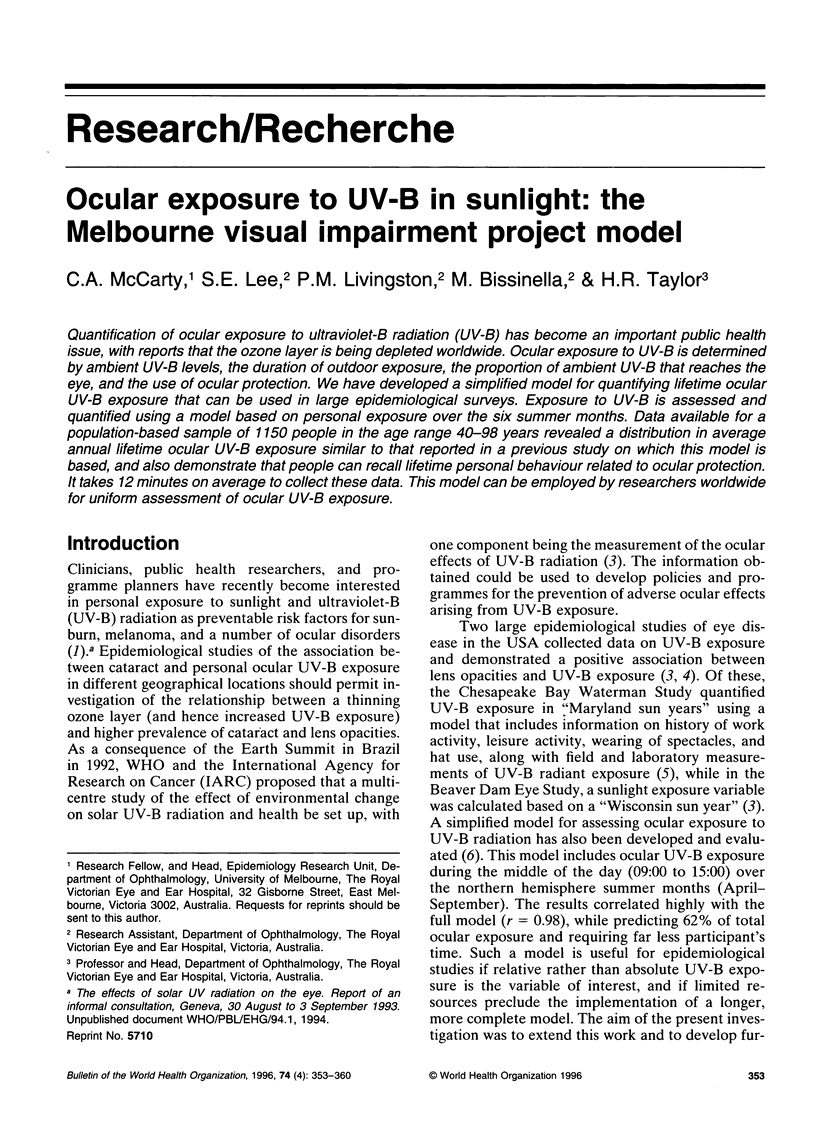

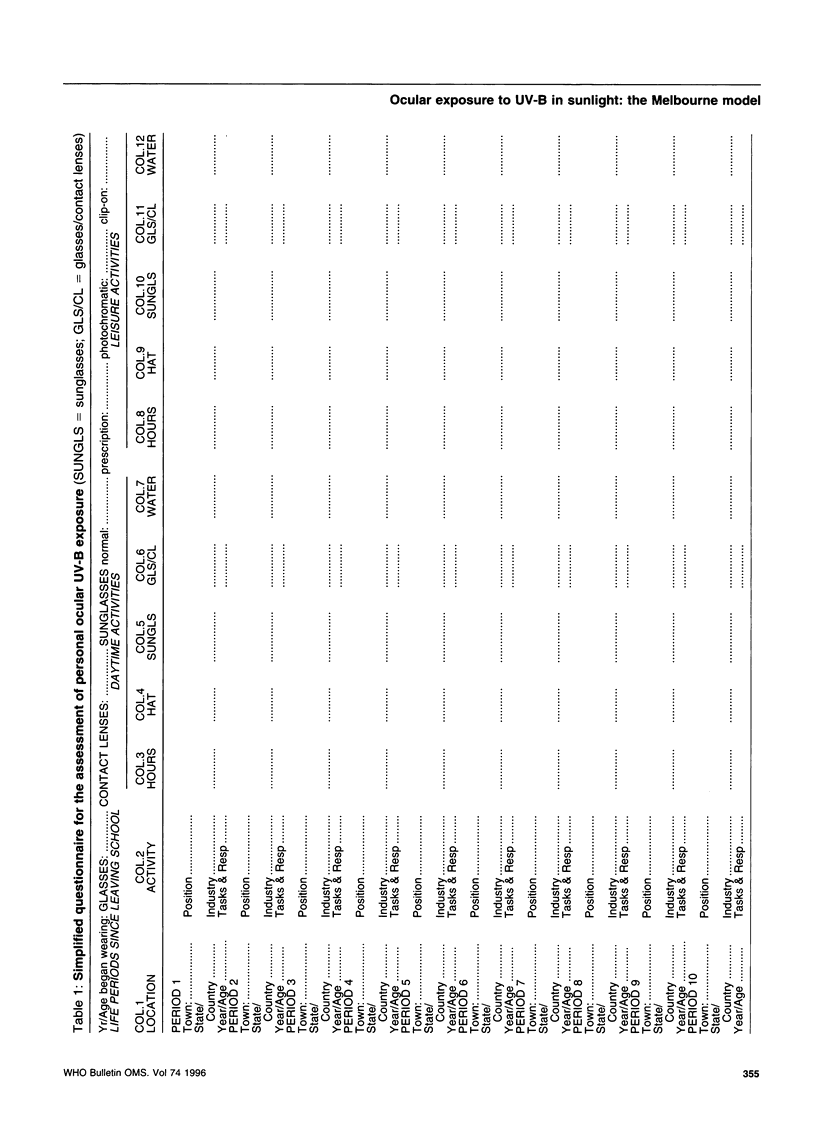
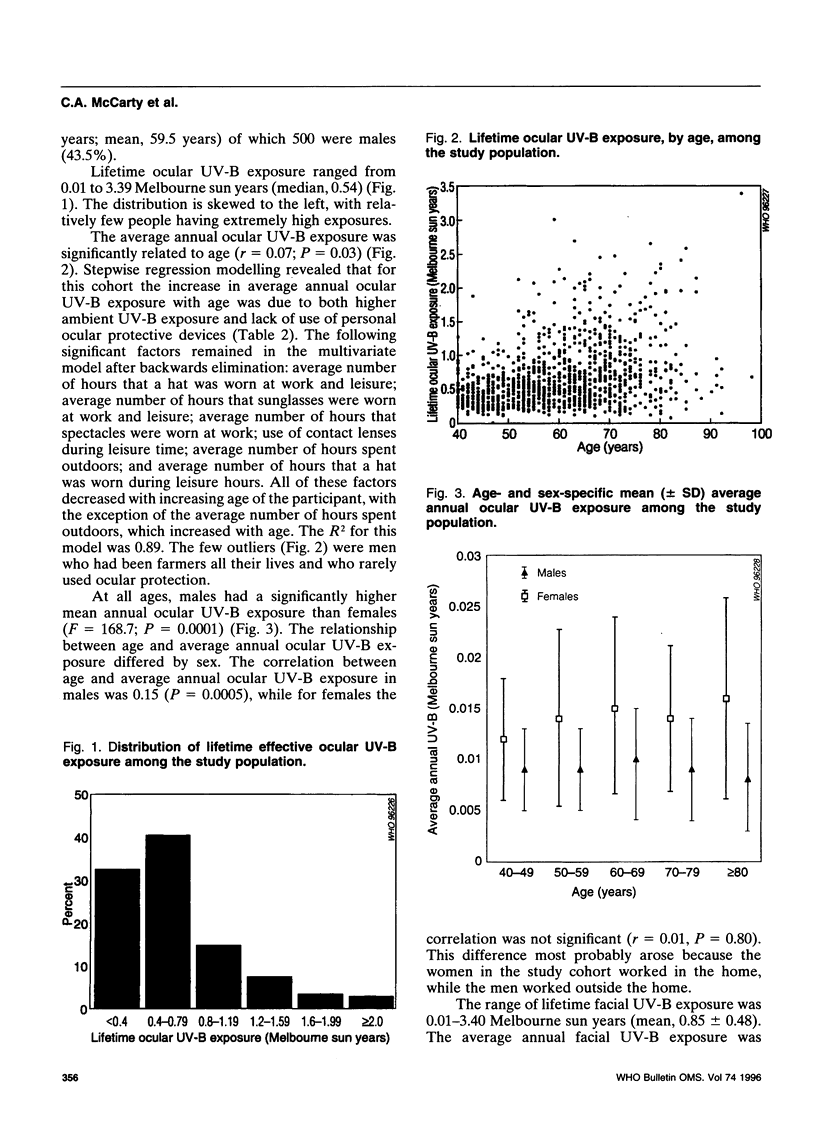
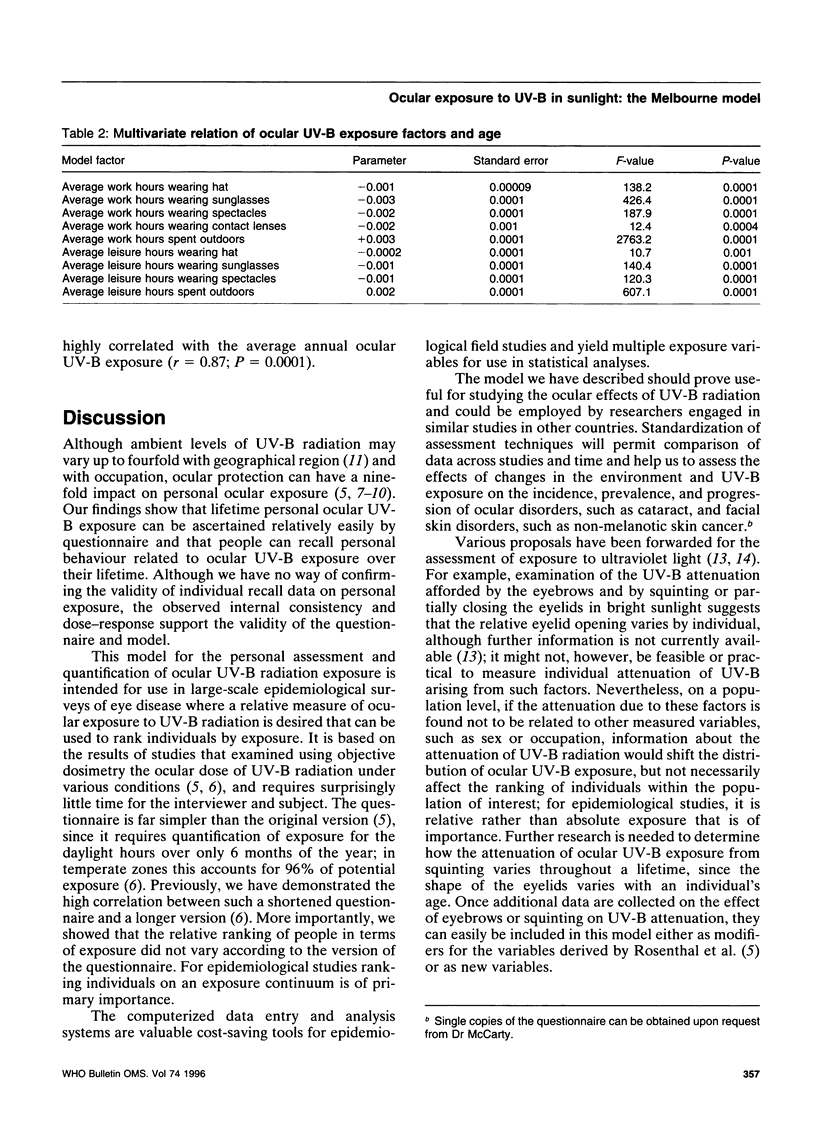
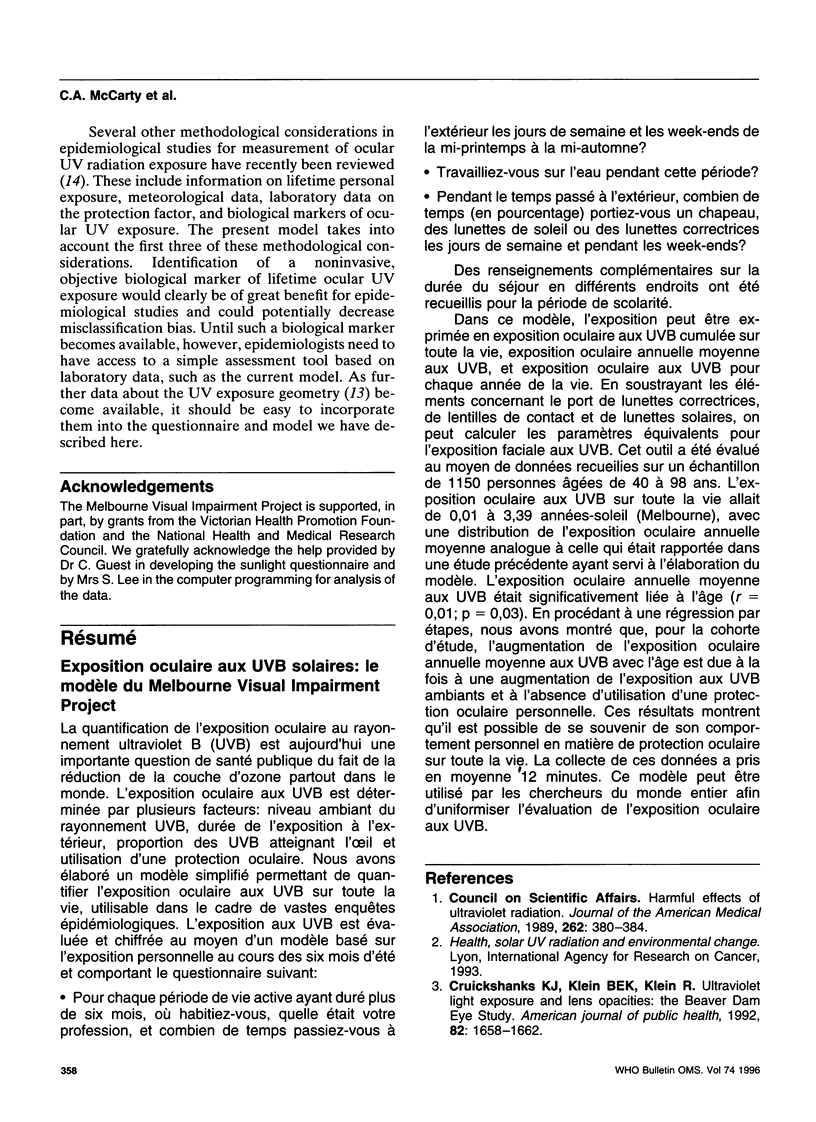
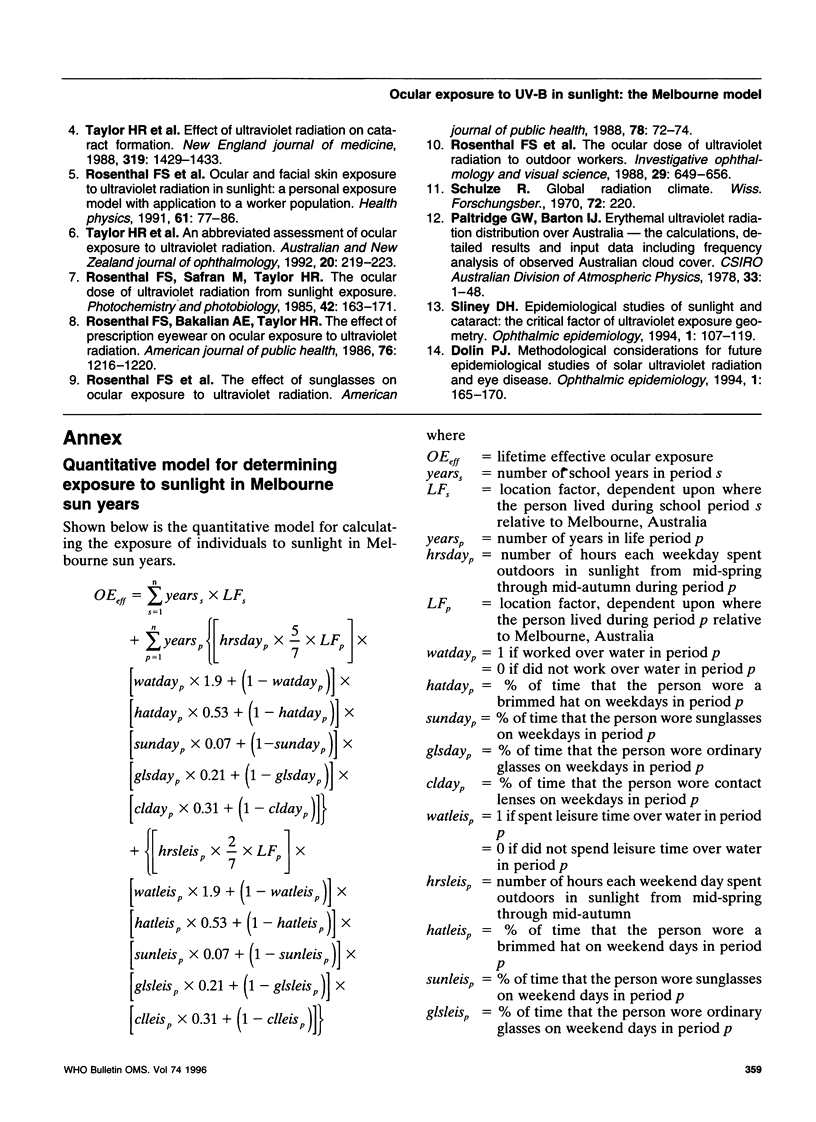
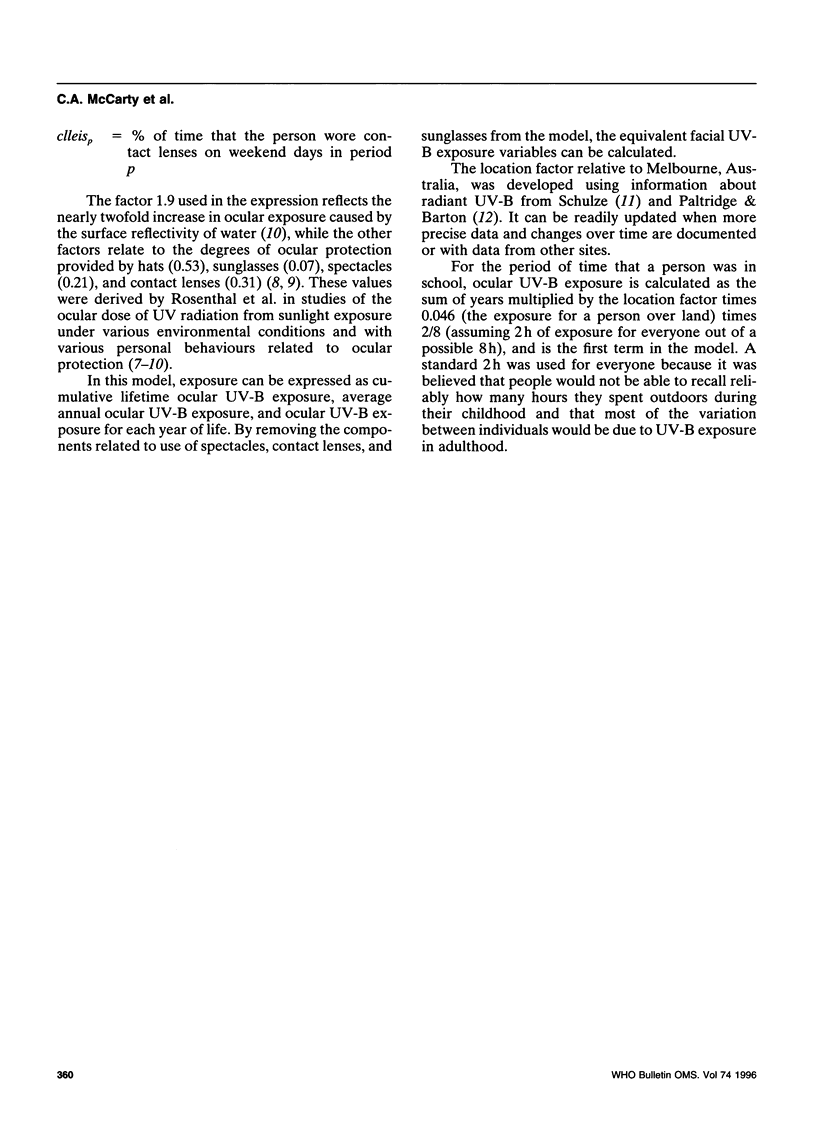
Selected References
These references are in PubMed. This may not be the complete list of references from this article.
- Cruickshanks K. J., Klein B. E., Klein R. Ultraviolet light exposure and lens opacities: the Beaver Dam Eye Study. Am J Public Health. 1992 Dec;82(12):1658–1662. doi: 10.2105/ajph.82.12.1658. [DOI] [PMC free article] [PubMed] [Google Scholar]
- Dolin P. J. Methodological considerations for future epidemiological studies of solar ultraviolet radiation and eye disease. Ophthalmic Epidemiol. 1994 Dec;1(3):165–170. doi: 10.3109/09286589409047225. [DOI] [PubMed] [Google Scholar]
- Rosenthal F. S., Bakalian A. E., Lou C. Q., Taylor H. R. The effect of sunglasses on ocular exposure to ultraviolet radiation. Am J Public Health. 1988 Jan;78(1):72–74. doi: 10.2105/ajph.78.1.72. [DOI] [PMC free article] [PubMed] [Google Scholar]
- Rosenthal F. S., Bakalian A. E., Taylor H. R. The effect of prescription eyewear on ocular exposure to ultraviolet radiation. Am J Public Health. 1986 Oct;76(10):1216–1220. doi: 10.2105/ajph.76.10.1216. [DOI] [PMC free article] [PubMed] [Google Scholar]
- Rosenthal F. S., Phoon C., Bakalian A. E., Taylor H. R. The ocular dose of ultraviolet radiation to outdoor workers. Invest Ophthalmol Vis Sci. 1988 Apr;29(4):649–656. [PubMed] [Google Scholar]
- Rosenthal F. S., Safran M., Taylor H. R. The ocular dose of ultraviolet radiation from sunlight exposure. Photochem Photobiol. 1985 Aug;42(2):163–171. doi: 10.1111/j.1751-1097.1985.tb01555.x. [DOI] [PubMed] [Google Scholar]
- Rosenthal F. S., West S. K., Munoz B., Emmett E. A., Strickland P. T., Taylor H. R. Ocular and facial skin exposure to ultraviolet radiation in sunlight: a personal exposure model with application to a worker population. Health Phys. 1991 Jul;61(1):77–86. doi: 10.1097/00004032-199107000-00008. [DOI] [PubMed] [Google Scholar]
- Sliney D. H. Epidemiological studies of sunlight and cataract: the critical factor of ultraviolet exposure geometry. Ophthalmic Epidemiol. 1994 Jun;1(2):107–119. doi: 10.3109/09286589409052366. [DOI] [PubMed] [Google Scholar]
- Taylor H. R., Muñoz B., Rosenthal F. S., West S. An abbreviated assessment of ocular exposure to ultraviolet radiation. Aust N Z J Ophthalmol. 1992 Aug;20(3):219–223. doi: 10.1111/j.1442-9071.1992.tb00943.x. [DOI] [PubMed] [Google Scholar]


